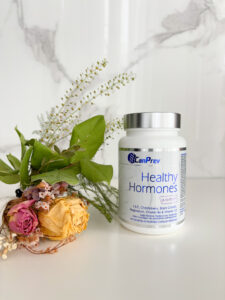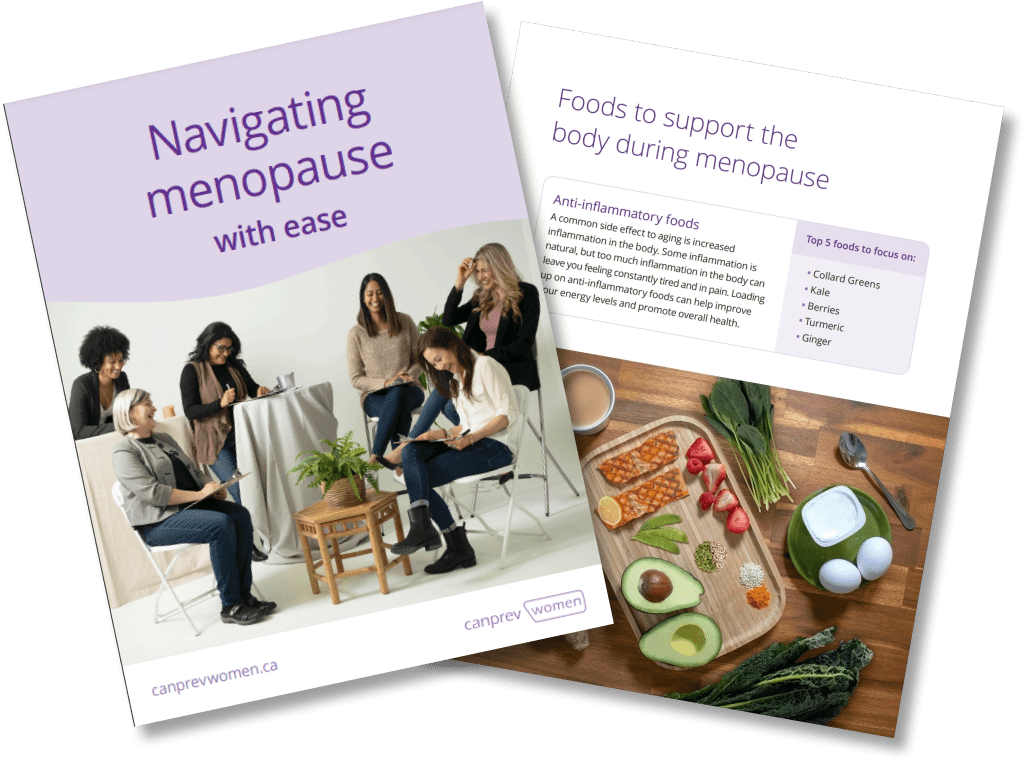Uterine fibroids can feel like a sudden storm, sweeping through your life with a whirlwind of unexpected symptoms. And the reality is, it’s more than just physical discomfort. It’s the emotional toll of managing a condition that can really throw off your daily rhythm. If you’ve been feeling a bit overwhelmed with symptoms or are considering taking preventative steps, we’re here to help. We’ll guide you through understanding fibroids, common symptoms, and the best natural ways to alleviate discomfort.
What are uterine fibroids?
Uterine fibroids, also known as uterine leiomyomas, are non-cancerous growths that develop within the muscle walls of the uterus. They can vary in size, from tiny seeds to larger lumps (up to the size of a watermelon) and can appear in different parts of the uterus. Fibroids are common among women between the ages of 30-50 years and while some may never even know they have fibroids, others might experience a range of symptoms.
Common fibroid symptoms
The symptoms of uterine fibroids can vary widely depending on their size and location. These include:
- Heavy and prolonged menstruation between or during your periods
- Spotting or bleeding between periods
- Pain during intercourse
- Frequent urination
- Constipation and/or bloating
- Pelvic pressure or pain
- Back or leg pain
- Increased menstrual cramping
- Stomach swelling
- Anemia (which can cause fatigue)
- Difficulty emptying your bladder
- Difficulty getting pregnant
What causes uterine fibroids?
While the exact cause of uterine fibroids remains unclear, several factors may contribute to their development. Let’s take a closer look:
- Early onset of menstruation: Some studies show that young girls who start their menstrual cycle before the age of 11 have an increased risk for fibroids. Early menstruation means earlier exposure to reproductive hormones like estrogen and progesterone. Prolonged exposure to these hormones, primarily estrogen, can increase the risk of developing fibroids.
- Genetic predisposition: If a family member has a history of fibroids, you may have an increased risk of developing them.
- Ethnicity: African-American women are more likely to develop fibroids and tend to experience more severe symptoms.
- Vitamin D deficiency: Research shows that low levels of vitamin D can affect our cell growth and immune response, which might encourage fibroid tissue to develop.
- Obesity and a higher body mass index (BMI): Having a high BMI or being 20% over your advised body weight can lead to uterine fibroid development. Obesity is linked to higher estrogen levels, as estrogen is produced in our fat cells.
- Age: Fibroids are common among women during their reproductive years, generally between the ages of 30-40 years. Fibroids tend to grow when hormone levels are higher (during pregnancy) and shrink when hormone levels are low (during the transition to menopause).
The relationship between hormonal balance and fibroid management
Uterine fibroids are like hormonal sponges, soaking up estrogen and progesterone, which are the body’s key reproductive hormones. Fibroid tissues have more receptors for these hormones than normal uterine tissue, which means they grow when these hormone levels rise.
During phases like our premenstrual cycle, perimenopause, and menopause, estrogen levels can surge leading to a condition called estrogen dominance (a state where estrogen outweighs progesterone). This imbalance can encourage the growth and spread of fibroids. Insufficient progesterone can further complicate the regulation of fibroid growth. This is because progesterone not only counteracts estrogen’s effects on fibroids but also has the potential to slow their growth and limit their size.
Stress and estrogen dominance
Stress significantly impacts the body’s ability to regulate hormones, particularly progesterone and estrogen. When we’re stressed, our bodies release cortisol, a hormone that helps manage the body’s response to stressful situations. While cortisol is essential for handling acute stress, chronic stress leads to prolonged cortisol release.
This sustained high level of cortisol can disrupt the delicate balance of our reproductive hormones. Elevated cortisol can suppress the production of progesterone, leading to a state of estrogen dominance which can stimulate the growth of fibroid cells.
High cortisol levels can also interfere with the liver’s ability to metabolize and clear excess estrogen from the body, which can intensify the problem of estrogen dominance. This additional estrogen circulates in the bloodstream, further promoting fibroid growth.
Green tea
Green tea contains flavanols, which are powerful antioxidants known for their ability to reduce oxidative stress and prevent cell damage in the body. Research shows that one specific flavanol, epigallocatechin gallate (EGCG), found abundantly in green tea, can inhibit processes that promote the growth and development of fibroids. EGCG can effectively slow down or halt the rapid cell division responsible for fibroid growth. This suggests that regular consumption of green tea may help manage fibroids by potentially reducing their growth rate or preventing further development altogether.
Chasteberry
Chasteberry or vitex, has been traditionally taken for symptoms such as heavy menstrual bleeding and painful periods. Its anti- inflammatory properties may help alleviate some of the discomfort associated with fibroids, such as pelvic pain and pressure. Additionally, chasteberry acts on the hypothalamus and pituitary glands, helping to regulate the production of hormones such as estrogen and progesterone. By promoting hormonal balance, it may help reduce the excessive estrogen levels that can contribute to fibroid growth.
If you’re looking for a safe and convenient way to incorporate chasteberry into your routine, CanPrev’s Healthy Hormones can help. This all-natural formula is designed to help balance menstrual cycle irregularities, relieve PMS and address issues related to estrogen dominance. It contains a clinically significant 400mg daily dose of indole-3-carbinol alongside chasteberry, magnesium, black cohosh, and vitamins B6 and D3.
Vitamin D
One key mechanism by which vitamin D may impact fibroids is through its ability to regulate estrogen levels. Vitamin D receptors in the uterus play a role in how estrogen is processed in the body. When vitamin D levels are sufficient, it helps maintain a healthy balance of estrogen, which can potentially slow the growth of fibroid cells.
Vitamin D also possesses anti-inflammatory properties and supports immune function. Chronic inflammation is linked to the development and growth of fibroids. By reducing inflammation, vitamin D may help mitigate some of the inflammatory processes that contribute to fibroid formation and progression.
Iron
Heavy menstrual bleeding (menorrhagia) is a common symptom associated with uterine fibroids and can lead to iron deficiency anemia if left unchecked. Iron deficiency occurs when the body lacks sufficient iron to produce hemoglobin, the protein in red blood cells that carries oxygen throughout the body. Here’s how iron supplementation can help manage heavy menstrual bleeding:
- Addressing iron deficiency: Heavy menstrual bleeding can result in significant blood loss, leading to iron depletion over time. Iron supplementation helps replenish iron stores and prevents or treats iron deficiency anemia. This can alleviate symptoms such as fatigue, weakness, and shortness of breath, which are often associatedwith low iron levels.
- Supporting red blood cell production: Iron is essential for the production of hemoglobin in red blood cells. Adequate iron levels support the body’s ability to produce healthy red blood cells, which are necessary for oxygen transport and overall energy levels.
CanPrev’s Iron Bis-Glycinate 20 contains iron bis-glycinate, a chelated form of iron that is easy to absorb, gentle on the stomach and doesn’t cause gastrointestinal upset. Available in both liquid and capsule form, this formula contains 20 mg of elemental iron in every dose. It is also enhanced with vitamins C, B6, B12 and folate, all cofactors that help in the absorption and assimilation of iron for the production of healthy red blood cells.
Natural ways to manage fibroid pain
Living with fibroids can feel like navigating a rollercoaster of discomfort and uncertainty. The pain, bloating, and heavy bleeding can throw off your day-to-day rhythm. But you’re not in this alone. There are gentle, natural ways to ease these symptoms and bring back a sense of comfort and control to your life.
Heat therapy
One of the simplest and most effective ways to soothe fibroid-related pain is through heat therapy. Applying a heating pad or hot water bottle to your lower abdomen can help relax the muscles and alleviate cramps. Warm baths can also provide comfort and relaxation, helping to reduce pain and tension.
Herbal remedies
Certain herbs have anti-inflammatory and pain-relieving properties that can help manage fibroid symptoms. Ginger, for example, isknown for its ability to reduce inflammation and ease menstrual cramps. Similarly, turmeric, with its active ingredient curcumin, can help decrease inflammation and pain. Drinking herbal teas or incorporating these herbs into your diet can offer natural relief.
CanPrev’s Cramp Relief is a comprehensive herbal and nutrient blend to relieve achy discomfort, pain and cramps that can come like clockwork with menstrual cycles. It features proven herbal remedies like potent cramp bark, to help target muscle and uterine muscle cramps. With ginger, sweet fennel, skullcap, magnesium and vitamin B6 for additional tension-relieving benefits, including the restlessness and nervousness that can accompany painful periods.
Exercise
Regular physical activity can help reduce fibroid symptoms by promoting circulation and reducing inflammation. Low-impact exercises like walking, swimming, and yoga can help relieve pain and improve your mood. Exercise also helps regulate hormones, which can play a role in fibroid growth and symptoms.
Understanding fibroids empowers us to prioritize self-care. You’re not just riding out the storm; you’re finding ways to calm its winds and ease the turbulence in your daily life. Whether you’re exploring natural remedies, seeking medical advice, or simply looking for ways to manage symptoms day-to-day, every step you take is a step towards feeling your best.
Sources:
Fibroid locations
Body Mass Index (BMI)
Hypothalamus Overview
The pituitary gland
10 Herbs and Supplements for Menopause
Spotting the signs of estrogen dominance
Why Vitamin D? All the health benefits and more!
Hormonal imbalance & PMS: Are they connected?
The Health Disparities of Uterine Fibroids for African American Women: A Public Health Issue
Association between obesity and the risk of uterine fibroids: a systematic review and meta-analysis
The effect of vitamin D supplementation on the size of uterine leiomyoma in women with vitamin D deficiency
Science Update: Green tea compound may inhibit processes promoting uterine fibroid growth, NIH-funded study suggests
Association of Age at Menarche With Increasing Number of Fibroids in a Cohort of Women Who Underwent Standardized Ultrasound Assessment




